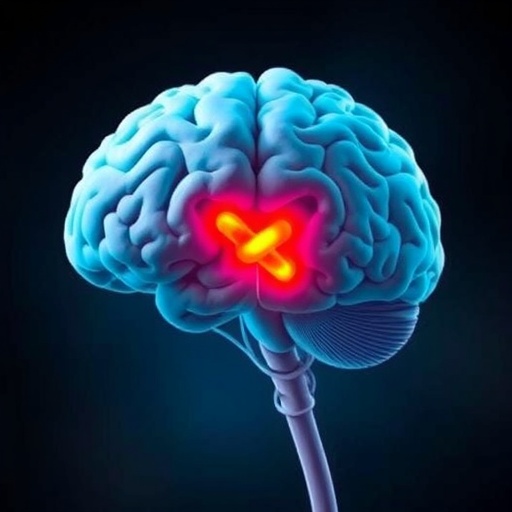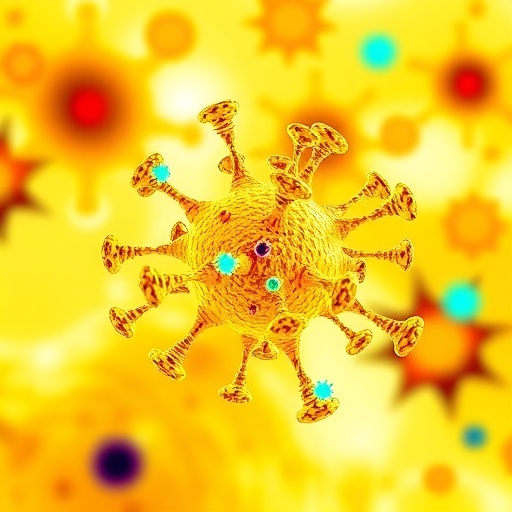In a groundbreaking study aimed at understanding the intricacies of evaluating brain injuries in preterm infants, researchers have shed light on the challenges posed by inter-observer variability in scoring white matter injuries using brain magnetic resonance imaging (MRI). This work, spearheaded by Grabowski et al., emphasizes the necessity for standardized approaches in pediatric radiology, focusing specifically on the developmental concerns surrounding moderate-to-late preterm infants who are often at heightened risk for neurological complications.
The phenomenon of inter-observer variability refers to the differences in interpretations of medical images by different radiologists. In the context of MRI evaluations, this variability can lead to inconsistencies in diagnosis, treatment decisions, and ultimately patient outcomes. The study’s authors lay the groundwork for addressing these discrepancies by rigorously analyzing how various radiologists score MRIs of preterm infants and identifying the factors that contribute to disagreement. This timely investigation is vital, given the increasing prevalence of preterm births globally and the imperative to improve outcomes for these vulnerable populations.
In conducting their research, Grabowski and colleagues meticulously gathered a diverse cohort of images representing a range of developmental stages and injury severities in brain structures pertinent to preterm infants. The central focus of their analysis was white matter, which is critical for the proper functioning of the nervous system. Damage to this area can have profound implications for cognitive and motor development later in life. Given the complex nature of brain anomalies detected in MRI scans, the researchers employed advanced statistical methodologies to quantify observer agreement and dissect the root causes of observed discrepancies.
.adsslot_HizrbCBWfp{width:728px !important;height:90px !important;}
@media(max-width:1199px){ .adsslot_HizrbCBWfp{width:468px !important;height:60px !important;}
}
@media(max-width:767px){ .adsslot_HizrbCBWfp{width:320px !important;height:50px !important;}
}
ADVERTISEMENT
One of the key findings of the study reveals that the level of experience and training of radiologists significantly impacts scoring outcomes. Radiologists with greater exposure to pediatric cases were more consistent in their assessments compared to their less experienced counterparts. This suggests that targeted training programs could diminish variability in scoring practices, ultimately enhancing the reliability of diagnoses made in clinical settings. The results from Grabowski’s team underscore the urgent need for education and standardized protocols within the field, ensuring all medical professionals possess a high level of competence when assessing such sensitive cases.
Beyond individual radiologist performance, the research highlights the intricacies involved in defining the parameters of what constitutes white matter injury. There is often ambiguity in the terminology and classification systems used to describe these injuries, leading to inconsistencies in scoring. The authors advocate for the adoption of clearer definitions and standardized reference materials that could serve as a foundation for future scoring guidelines. Such resources would not only streamline the diagnostic process but also empower radiologists to make more informed clinical decisions.
Another crucial aspect explored in the study is the role of patient-specific factors that may influence MRI scoring. Variability related to gestational age at birth, comorbidities, and developmental factors can all play a role in how a radiologist interprets an image. The researchers suggest that incorporating clinical context into scoring systems could help mitigate biases and clarify assessments. As understanding of these variables improves, physicians will be better equipped to interpret imaging results through the lens of the individual infant’s health status and developmental trajectory.
In the landscape of pediatric radiology, a well-established framework for scoring white matter injury is pivotal. The recommendations proposed by the authors are a call to action for both academic institutions and medical organizations to collaborate in the establishment of a comprehensive scoring system. Through workshops, consensus meetings, and continuous education initiatives, it is hoped that a unified approach will emerge, minimizing variations across practitioners and institutions.
Furthermore, the implications of such variability extend beyond clinical practice into research domains. Discrepancies in scoring can undermine the validity of studies that rely on MRI data to draw conclusions about treatment efficacy or developmental outcomes. By embracing the principles of this study, researchers can enhance the reliability of data collection methods, fostering confidence in findings that could shape future guidelines and therapeutic approaches.
As neonatal care continues to evolve, integrating multidisciplinary input in defining the scoring of white matter injuries will be crucial. Collaboration between radiologists, neonatologists, and developmental specialists can ensure that the approach taken is holistic and considers the multifactorial nature of preterm infant health. The share of insights across disciplines will advance the field, creating a synergy of expertise that ultimately benefits patient care.
The work of Grabowski et al. signifies a vital step in bridging the gap between radiological science and clinical applicability. Their findings emphasize the need for a concerted effort to reduce inter-observer variability, ensuring that all preterm infants receive timely and appropriate diagnoses. With the proper framework in place, the potential for improved long-term outcomes is promising, as healthcare professionals can make more consistent and informed therapeutic decisions.
In an era where the precision of medical imaging is crucial, the call for collaborative standards in evaluating MRI results is particularly timely. With the advent of artificial intelligence and machine learning tools that aid in image analysis, future work could also focus on how these technologies might complement human interpretation and reduce variability further. The synergy of human expertise and technological advancement could pave the way for an unprecedented era of accuracy in neuroimaging.
Indicatively, this research resonates far beyond the realm of radiology; it serves as a pivotal reminder of the intricate balance between technology, human capability, and the aspiration for improved patient care. In embracing these findings, the medical community can enhance the diagnostic process for preterm infants grappling with white matter injuries, ensuring they receive the best possible support during their critical early development stages.
As we stand on the brink of new discoveries in pediatric healthcare, leveraging collaborative standards and education will be critical in deciphering complex data, ultimately transforming the landscape of neonatal care. The notion that effective communication and unified standards may serve as a bedrock for advancement in this specific area highlights a hopeful future for preterm infants at risk of significant neurological impairments.
Amidst these findings, the researchers optimistically emphasize the importance of continued dialogue and research efforts to mitigate inter-observer variability in MRI scoring. With the commitment of the medical community to addressing these challenges, there exists a tangible hope for enhancing the care and outcomes of preterm infants facing the long journey ahead.
Subject of Research: Inter-observer variability in MRI scoring of white matter injury in preterm infants
Article Title: Inter-observer variability in scoring of white matter injury on brain magnetic resonance imaging in moderate-to-late preterm infants.
Article References:
Grabowski, K., Olsen, L., Gamble, G. et al. Inter-observer variability in scoring of white matter injury on brain magnetic resonance imaging in moderate-to-late preterm infants. Pediatr Radiol 55, 1682–1689 (2025). https://doi.org/10.1007/s00247-025-06297-0
Image Credits: AI Generated
DOI: July 2025
Keywords: Inter-observer variability, preterm infants, MRI, white matter injury, pediatric radiology.
Tags: developmental concerns in preterm infantsfactors influencing diagnostic agreementimaging discrepancies in brain injuriesimproving outcomes for preterm infantsinter-observer differences in radiologyMRI evaluation challenges in pediatricsneurological complications in preterm birthsobserver variability in medical imagingpreterm infant brain injury analysisresearch on brain MRI in neonatologystandardizing pediatric radiological assessmentswhite matter injury scoring in infants





